Progress at the National Butterfly Center
As first published in American Butterflies, Spring 2014
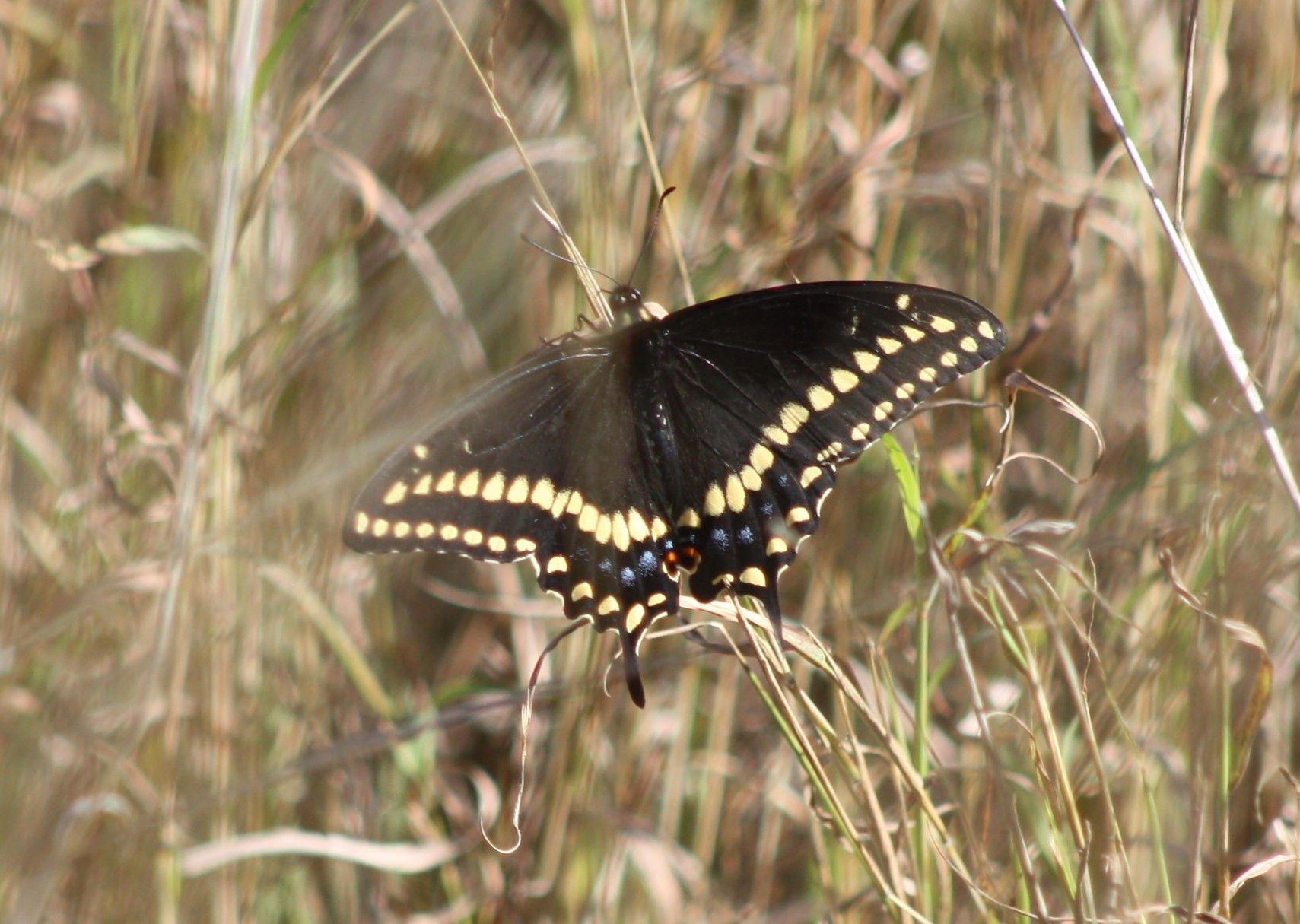
Growing up in the Rio Grande Valley, my childhood days involved catching Texas Horned Toads, digging up creatures that looked like Naked Mole Rats, and chasing Indigo snakes off the patio with my grandfather. Occasionally, we'd catch a turtle in the canal, and keep it for a week or two; or find an owl in the barn. Once there was even a rattlesnake curled up under my bedside table.
Flocks of green parrots, angry Mockingbirds, and families of armadillos inhabited our twelve acres on the outskirts of McAllen. Here we kept a few horses and cattle, along with my mother's pet donkey, Frankie, and the pig she gave my dad for Father's Day. At the ranch, there were coyotes, deer and javelina; all of which my brothers dressed in the yard. It was a wild and magical way to grow up—full of close encounters—where my natural curiosity was rarely the subject of parental supervision.
Weekends were spent at the beach, discovering sea creatures and visiting the Turtle Lady, the legendary Ms. Ila Loescher, founder of Sea Turtle, Inc. and pioneer in the field of conservation. What I remember most about Ms. Ila is that she turned her home into a sanctuary for injured animals, and shared her genuine love for them with everyone who came to call. Her garage held 'kiddie pools' for turtles in isolation and rehabilitation, and every turtle had a name. She dressed these turtles up in doll clothes, and costumed them for the holidays. Some fussed about how ridiculous this was, but I thought Ila was a bold, brilliant, funny, free spirit. No doubt, the work she was doing was serious and sometimes difficult. Why shouldn't she have fun?
This conservation stuff is important work.
Prior to coming to the National Butterfly Center, I didn't concern myself with it much, but now I can barely drive my car down the road without flinching. Not only did I cry when the careless Grackle flew into my side view mirror; I stopped traffic across five lanes of Conway Avenue, recently, to rescue a Texas Tortoise crossing the road. You see, going out of my way to save animals has always been second nature to me; however, working hard to win the hearts and minds of everyone I meet…well, that’s a different story.
Arriving at the National Butterfly Center, I wondered (as many do) what’s with the shaggy, hodge-podge of wildflowers and grasses growing wild about the Visitor’s Pavilion? Turns out, I nailed it! The green space around our landmark building is actually planted with 12,000 plugs of rare grasses and endangered wildflowers. This joint conservation project with the U.S. Fish & Wildlife Service has really taken root, producing a flourishing native grassland, resplendent with native wildflowers. Created as a way to protect the inconspicuous, but federally endangered, Slender Rushpea, along with two other wildflowers of conservation importance, the Geoffrey McAllen Memorial Native Grassland and Wildflower Refugium contains ten species of grasses native to south Texas along with beautiful Pinkladies (Pink Evening Primsroses), cheery Indian Blankets, brilliant yellow Roughpod Bladderpods and many more wonderful wildflowers.
Fortunately, butterflies seem to love everything growing in this closely monitored preserve, designed to ensure plants such as Slender Rushpea do not disappear from our planet, even if existing populations should perish as the result of development, disease, drought or disaster.
Progress in this sanctuary is surveyed annually by USFWS botanists, who carefully record their findings and communicate recommendations to our staff, responsible for its care and feeding. Although we’re a private nonprofit, we are partners in this public trust and custodians of The Geoffrey McAllen Memorial Native Grassland and Wildflower Refugium, established fall of 2011. This tangible testament to love and loss is a permanent reminder of the frailty of life, and a safeguard against future privation.
A tangible reminder....
Daily, the refugium reminds me there are many things I would hate to go without. My children, my parents and my spouse rank highest on the list, followed closely by clean water, clean air and food. My mother kept a small vegetable garden many, many years ago, that yielded okra, tomatoes, cucumbers, green beans, zucchini and yellow squash that we shared with the aphids and beetles. I remember 'worms' and bees being attracted to these plants, too, but no butterflies on their blossoms. It is only now, when I am old enough to be someone’s grandmother, that I am learning about larval hosts and the critical connection caterpillars have to native plants, everywhere.
With such limited knowledge, how strange it seems to spend my time, daily, with school children and teachers, grown-ups and gardeners, Girl Scouts and probationers, sharing what little I do know in the hope of leaving this world a better place.
Awareness begins in the garden.
More than ten years ago, the “old” gardens were planted at the NABA International Butterfly Park. Native plants that produce nectar for butterflies or make good food for caterpillars were sought out, collected and propagated for this colorful, wonderful test of If you build it, they will come. And come, they did; millions upon millions of them—and more than 217 species!
In 2014, we are still seeking, collecting and propagating native plants for our own use and for introduction to the commercial horticultural trade. With more than 100 species of native plants on the property, we continue to discover new ones like the White Twinevine and Climbing Milkvine. Of course, we sing the praises of native plants to anyone who will listen: They are affordable, indigenous, drought-hearty and pest resistant; they grow like weeds, but are NOT weeds; they are varied and lovely for landscaping; and necessary for clean air, water filtration, erosion and climate control. While many also serve medicinal and homeopathic purposes, all of them provide feeding and breeding habitat for wildlife.
Growing the gardens at the National Butterfly Center fulfills our mission in multiple ways. I laughingly tell people the more we plant the longer they stay; but the truth is, the more we plant, the greater our value proposition for visitors. In light of that notion, the Texas Butterfly Gardens were conceived to showcase native plant species in botanical garden fashion. The sunken butterfly wing gardens, the graduated (tiered) gardens and the Butterfly Conservatory & Outdoor Classroom are not gimmicks; they are designed to lure the public at large into the wilderness to receive conservation education in a contrived setting. For example, the demonstration beds will be configured by plant and butterfly species-association, to help people comprehend the dynamic relationship between hosts and caterpillars. Here, people cannot help but learn about “Growing Connections” in spite of themselves.
Brilliant by design.
As the result of increasing interest in what we do, we’ve outgrown the Visitor’s Pavilion in three short years. Although this space remains relevant for receiving guests, hosting special events and hanging exhibits, it was never intended to hold a hundred, hyperactive third graders on a field trip. For this reason, our next structure will be the Butterfly Conservatory & Outdoor Classroom. This greenhouse will double as an extension of our Nursery space and serve as, “the coolest classroom ever!” according to my 10 year-old. With your help, we hope to provide every child who visits this place the experience of a lifetime—one that will shape the future of conservation for generations to come.
Growing awareness of the National Butterfly Center is not only increasing our need for facilities, but expanding opportunities for us to impact our community in a variety of ways. Once such opportunity involves supporting the efforts of teachers and exceeding their expectations outside the classroom. In order to achieve this, our entire staff underwent training to become Project WildTM –certified and the results have been astounding. Implementation of this engaging, environmental education program is fueling our favor among local school districts and expanding our ability to encourage learning with nature.
Today, our focus is on exposing visitors of all ages to the world of wonders on our little parcel of land, so they may come to appreciate the intrinsic value of butterflies and all wildlife. Our Winged Wonders and Working Wonders programs, specifically, support this agenda by giving youth, grades K-12, the tools they need to become observant students and practical stewards of our natural treasures, on the way to becoming responsible citizen conservationists.
“Wild Thing, You make my heart sing.”
As part of the Lower Rio Grande Valley Wildlife Conservation Corridor (LRGVWCC), the National Butterfly Center is home to so much more than butterflies. Before acquiring the ‘Critter Cams’, we had only an occasional glimpse of the tremendous diversity of wildlife, here; however, we now recognize resident family units and interlopers among the raccoon, skunk, armadillo, coyote, javelina, bobcat and other animals on our trails. This familiarity has heightened our custodial feelings for all of them in an area where an estimated 95% of native habitat has been destroyed.
The existence of the conservation corridor, which follows the last 275 miles of the Rio Grande River, means rapidly-disappearing habitat will be preserved for these and other creatures. Comprised of federal, state and nonprofit tracts (like ours), the corridor also contains privately-held properties with conservation easements from Falcon Dam to the Gulf of Mexico. Some of these lands are contiguous, while others appear isolated; all are loosely strung together, separated by commercial farms, industrial parks, international bridges and subdivisions. In fact, the National Butterfly Center sits on what was once an onion field.
Re-vegetating agricultural lands with native plant species is our best chance at creating a nearly-continuous wildlife corridor and shoring up shrinking habitat for butterflies. Toward this end, both state and federal governments are making limited resources available to landowners who wish to enter into agreements and undertake initiatives like the Texas Savannah Trails and Ayenia Refuguim (TEXSTAR) project. We are pleased to be one of several sites selected to partner with the U.S. Fish & Wildlife Service in this project, to restore the use of our land for wildlife by planting more than four acres of endangered Tamaulipan Kidneypetal or Texas Ayenia (Ayenia limitaris), with assorted butterfly plants.
Gimme an M!
With all the hoopla in the news, lately, I bet your first thought went to the almighty Monarch, but I had Migration in mind. In 2010, the National Butterfly Center suffered catastrophic flooding as the result of Hurricane Alex, an unseasonably strong, June storm that caused over $1 billion in damage to the Lower Rio Grande Valley. The levee that transects our property kept the rising waters from washing away our research gardens, nursery and portable buildings, but we lost the resaca and the wetlands on the seventy acres between the river and the canal. When the floodwaters receded after four long months, the outer bank of the resaca simply fell into the river, draining the channel; the shallow wetland dried up, filled with silt and debris; and any habitat we had for migratory ducks and shorebirds disappeared.
Since the day I began my work here—literally, The. First. Day.—I have been charged with finding a way to restore the lost wetland, re-veg the ‘Back 70’ and regain use of that chunk of overgrown land. This winter we reached a critical point in this pursuit, when Ducks Unlimited accepted our formal request for technical assistance under the Texas Prairie Wetlands Project, for which they are the lead agency. At this time, we are waiting for their official site visit and initial assessment, to determine whether we are suitable for wetland re-development; in the meantime, I dream about dabblers, waders and shallow rookeries filled with chirping frogs and South Texas Siren. Did I mention we already have alligators?
Discovering the Back 70 has been a real adventure! High stands of flowering crucita, mature Guajillo, fragrant Yucca and Sabal Palms dot the landscape that flows westward from the barretal to the dense riverine woodland, which is alive with butterflies, birds and dragonflies. After the wetland is excavated and filled, the remainder of the tract should become Texas savannah grassland, mixed with Zizotes Milkweed (Asclepias oenotheroides) and White Twinevine (Funastrum clausum), which are naturally occurring between the Visitor’s Pavilion and research gardens.
More about the milkweed.
I would be remiss if I did not take a few words to address the National Butterfly Center’s work on behalf of the Monarchs. This winter, we planted more than 2,000 seeds of Tropical Milkweed (Asclepias currasavica), and began cultivating another fourteen species. Ensuring clean, locally-sourced, native milkweeds are available to meet demand makes it possible for more people to plant it, thereby creating more breeding habitat for this species under pressure. Much of what we grow will be sold in the nursery, but we also plan to distribute milkweed to city parks and campus gardens with information concerning Monarch conservation. Imagine an abundance of colorful caterpillars acting as goodwill ambassadors for North America’s preeminent insect, enchanting citizens in public spaces! I don’t think it’s too much of a stretch, given the natural curiosity of children who are easily fascinated by caterpillars, butterflies and the magical lifecycle.
As part of the Monarch Joint Venture, the North American Butterfly Association is one of fifteen conservation, education, and research partners working together to conserve the monarch migration in the United States. In support of this goal, I would love to see the City of Mission become the largest, municipal way station for Monarchs on the way to Michoacán. My husband says every great triumph starts with an impossible vision, so my silly fantasy just might sprout legs.
“Listen to the mustn'ts, child. Listen to the don'ts. Listen to the shouldn'ts, the impossibles, the won'ts. Listen to the never haves, then listen close to me... Anything can happen, child. Anything can be.”
This poem by Shel Silverstein seems to be manifest in the National Butterfly Center. As I survey this place, I marvel at what must have transpired to bring it to life. Obviously, there was a dream that took root; a passion that grew; and a vision shared and supported by people like you. Correction: BY YOU.
Thank you.
As we prepare for the ceremonial groundbreaking for our next phase of development on April 25th, I feel the need to state, explicitly, “Expanding our gardens directly impacts our influence and standing.” For this reason, we will open the National Butterfly Center on Arbor Day to public officials, civic clubs, scout troops and school children—to anyone toting a shovel—to join us in planting one hundred native trees. As I see it, each person participating in this special event is actually making a deposit, here, in this extension of the Hackberry Trail. More than planting a tree, they are placing faith and trust in our organization and the promise of Preservation; buying into our mission and adopting our vision of a world full of wild butterflies.
Increasing habitat is the means by which we’re creating a movement—and what we’re really trying to cultivate are citizen conservationists and “backyard naturalists.” Each day, we proclaim this legion of people who embrace their role and accept responsibility for all of the wild, wonderful things we must tend and protect shall be our legacy—your legacy—through the environmental education and conservation efforts of NABA and the National Butterfly Center.



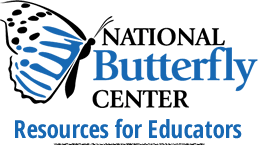


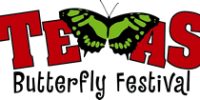
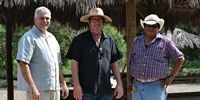

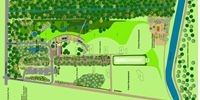
 Media
Media